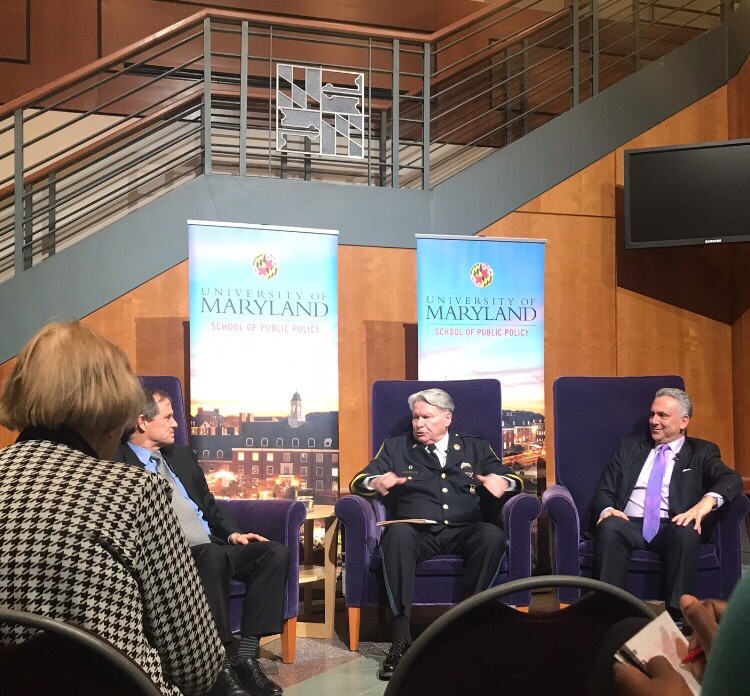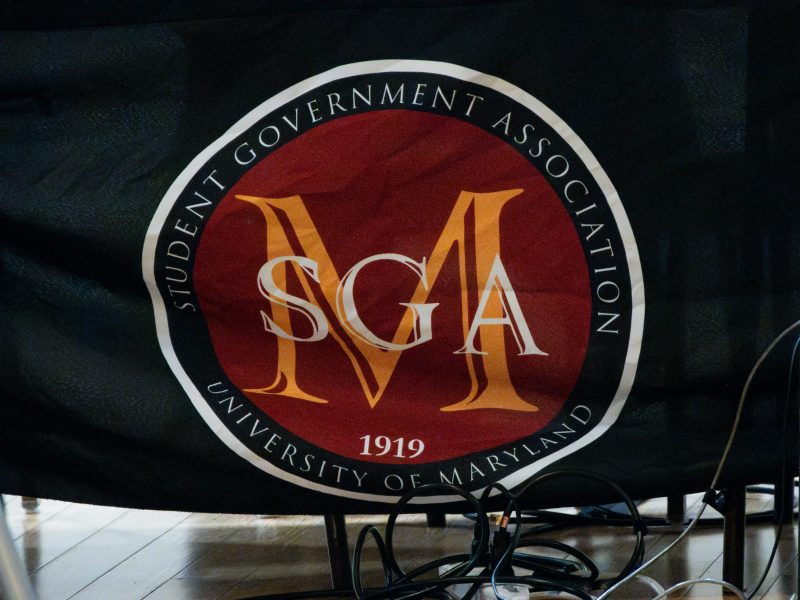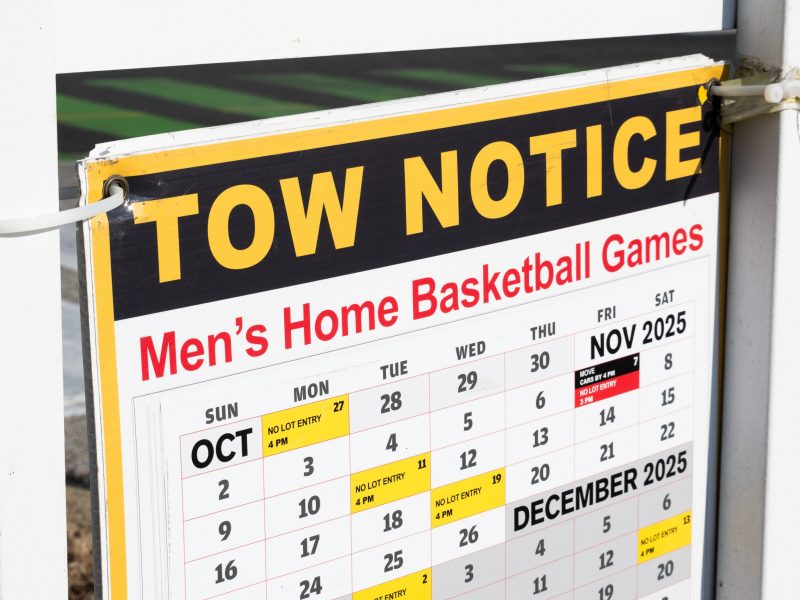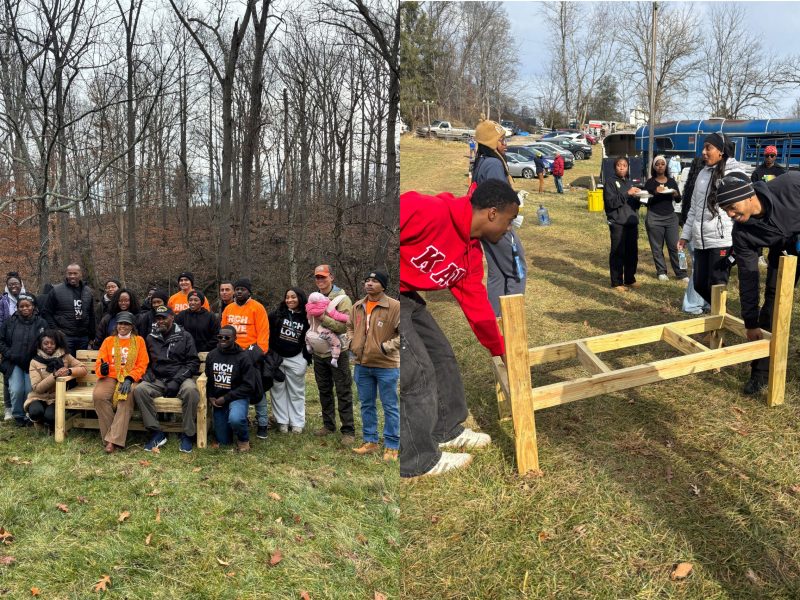By David Jahng
For The Diamondback
University of Maryland Police Chief David Mitchell spoke to a group of students and alumni Thursday about coping with the recent spike of hate bias incidents at this university and schools across the country.
Doron Ezickson, regional director of the Anti-Defamation League, joined Mitchell at the public policy school atrium in Van Munching Hall to discuss what to do in the wake of such incidents.
More than 40 people attended the lecture, which was the first of two the Norman and Florence Brody Family Foundation has planned. Robert Orr, the public policy school dean, moderated the discussion.
“Hate is not new,” Mitchell said. “Hate isn’t going away anytime soon.”
[Read more: UMD students collaborate with state delegate on hate bias incident bill]
Mitchell and Ezickson spoke about current issues the university is facing, including increasingly visible hate on campus, and the spread of white nationalist posters across college campuses nationwide.
27 hate bias incidents were reported to this university’s officials, including University Police and the Office of Civil Rights and Sexual Misconduct, between the first day of the fall semester and Dec. 8. Of those reported incidents, 15 were verified by the administration.
In the 2016-17 academic year, white nationalist posters were reported in multiple locations on the campus, a noose was found in a fraternity house and 2nd Lt. Richard Collins, a black Bowie State University student, was killed in what is now being tried as a hate crime. Last semester, multiple swastikas were reported across the campus.
The rise of hate bias incidents on this campus has mirrored a national trend of higher education institutions seeing increased racist propaganda. The ADL tracked 346 incidents on college and university campuses involving white supremacist propaganda between September 2016 and Jan. 29, 2018.
[Read more: UMD students have mixed reactions to new hate bias coordinator position and policy changes]
Mitchell and Ezickson also decried social media as a potential platform for hate speech.
Ezickson said perpetrators on social media are often looking for a response, hoping anger will cloud judgment and lead to impulsive actions. He told the forum to “take a step back” when reacting to hate bias incidents.
PJ Saumell, a freshman economics major who attended the lecture, recently saw a racial slur on a whiteboard on his resident assistant’s door, he said.
“I was really frustrated. The RA has always been a very supportive person on the floor, he’s always been there for everyone,” Saumell said. “No one has ever felt alienated by him, so it’s kind of disgusting to have this happen to him.”
Panelists told Saumell that in a situation like that, it’s important to have patience and start a civil conversation between everyone on the floor.
Mitchell also said during the lecture that staying strong in the face of hate requires the support of others. He emphasized the importance of reaching out, looking for red flags and those who need help.
Ezickson echoed the sentiment, adding: “Be there for someone else first.”
CORRECTION: Due to an editing error, a previous version of this story incorrectly stated that 27 hate bias incidents were reported to campus officials during the fall semester. Twenty-seven hate bias incidents were reported to campus officials between the first day of the fall semester and Dec. 8. This story has been updated.



